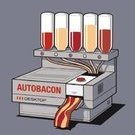
[WIP] Building a krAZ 255 6x6 Truck
By
AutoBacon, in LEGO Technic, Mindstorms, Model Team and Scale Modeling
-
Recently Browsing 0 members
No registered users viewing this page.

By
AutoBacon, in LEGO Technic, Mindstorms, Model Team and Scale Modeling
No registered users viewing this page.